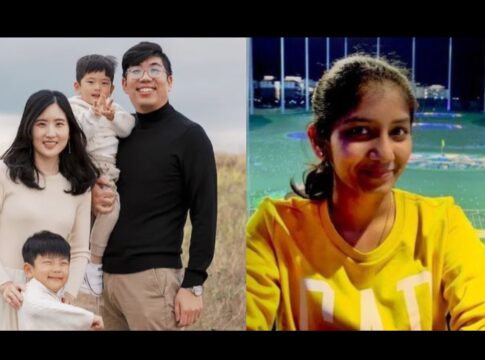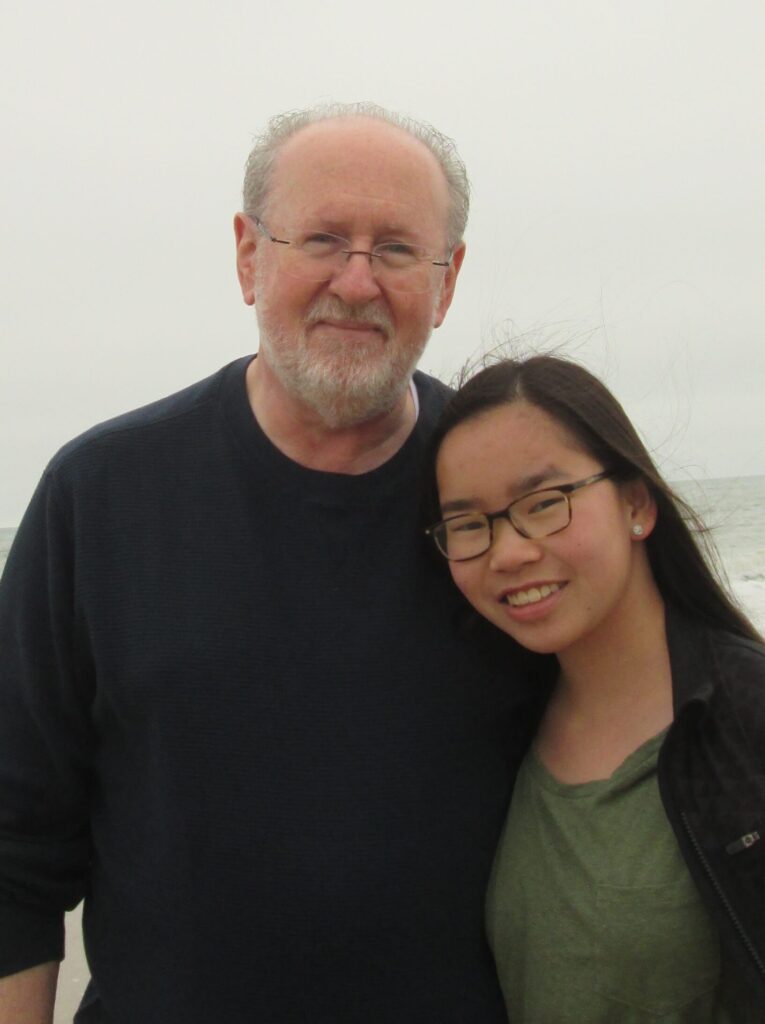‘
By Amanda Bang, AsAmNews Intern
Mia Hagood started asking her parents about her birth family at just four years old. She made photo albums of herself to give to her birth family in hopes to find them one day.
Wesley Hagood and his wife did not know much about Mia’s birth parents except for the papers they received when they adopted her. Motivated by their daughter’s curiosity, they started a search that in the end lasted almost 15 years.
China began its international adoption program in 1991. Since then, an estimated 110,000 children have been adopted through the program, including many in the U.S.
LATEST STORIES
Wesley Hagood, 67, released the book Searching for Your Chinese Birth Family in December 2021, which was the first of its kind. His book documented the years-long process of his own family’s search in hopes of providing resources for other families going through a similar process, as such resources were not available before.
“It was really an act of faith to begin writing the book before we had found Mia’s birth family,” Wesley Hagood said. “Finally, we had a path forward which was using something called the genetic genealogy type search… that ultimately was going to result in the discovery of both Mia’s birth family. (We) started writing the book with that being the ultimate solution that I was going to recommend.”
His daughter called finding her birth family “surreal.”
“Because after searching for so long, finally, successfully finding them was hard to believe,” Mia Hagood said. “After so much work, it was really a great relief to know that it hadn’t just been for nothing and I really was excited to be able to ask them questions and get to know them”
She said her birthparents were “shocked” to find she had been adopted internationally.
“I think it was a great surprise,” she said. “I noticed that they were like really happy about it because… if they weren’t, then I don’t think they would have been as like inclined to talk with me.”
In the book, her father discusses the three main methods a family can use to search for their Chinese birth family. He reviews how successful or unsuccessful these methods were in his family’s journey.
The first method mentioned is document-based searches, which rely on translating and interpreting the document given by the governmental adoption agency. For Mia Hagood and many others, the document searches proved to be unreliable.
“We eventually discovered that all of those documents were not true,” Wesley Hagood said. “They just were created for the purpose of declaring Mia and other children at the time as available to be part of the international adoption program.”
He also indicates media-based search as another method that is difficult and less successful.
“We also tried, what I refer to in the book is a media base search where you put up posters in the local area where they claim the child was found in hopes that someone would see the posters and get back and say, hey, there may be a relationship here, I may know the birth family,” he said. “But neither of those first two types of search really bore any fruit whatsoever.”
The most successful method that ultimately led to the Hagood family finding their daughter’s birth parents was the genetic genealogy approach. The family utilized DNA testing with traditional genealogical techniques to search for a genealogical match.
When he started hearing about DNA projects such as Genographic Project, 23andMe, and MyHeritage: Family tree & DNA, he thought it would be beneficial to use Mia’s DNA to create her own family genealogy.
“In some cases, like with Family Tree DNA, the purpose of it was to help people that were doing genealogical research on their family,” Wesley explained. “When we first tested, she probably didn’t have anyone closer than a fourth or fifth cousin. But then over time, they had like a third cousin that she matched to, and it turned out to be a young man whose ancestors were actually from the city where the orphanage was located.”
These connections led them to a Chinese DNA testing site 23MoFang, where they found Mia’s first cousin. This ultimately led the Hagood family to find Mia’s biological mother and father.

Now, Mia Hagood talks to her birth family through WeChat and sends gifts and letters through mail. Because of COVID-19 restrictions, she has not yet been able to visit her birth family in China.
Wanting to help others in her situation, she created a website to provide a “roadmap” for other families trying to find their biological families. The website portrays the different methodologies mentioned in her father’s book as well as different sites, books, and blogs that they found helpful in their search.
“When we first started searching, there wasn’t really a lot out there specifically geared towards a specific like methodology,” Mia Hagood said. “So that’s what we were trying to design, so that it would be as clear as possible.”
She also hopes the site can help younger adults and teens that might have less help as resources.
For any potential adoptees and families going through a similar journey as theirs, both Mia and Wesley Hagood said patience is key.
“Fortitude, to be able to continue searching and continue trying even if it seems like all of your efforts aren’t really yielding anything solid,” Mia Hagood said. “My dad and I have been working on this for 15 years, and I can’t count how much of that would have could be counted as waiting for someone to reply or waiting to go somewhere or waiting for the results and waiting for something to ship.”
“It can take a long time right to make that big breakthrough and you have to be patient,” Wesley Hagood said. “At times, you kind of have to take a break because it can be so intense. You can spend a lot of time resources money, emotional energy, and then feeling like you’re not getting anywhere.”
For this Chinese New Year, Mia Hagood was finally able to gift her birthparents the photo album of her childhood.
“I had originally made that with the purpose of giving it to my birth mother if I ever found her, so it was really cool that I got to finally send that.”
AsAmNews has Asian America in its heart. We’re an all-volunteer effort of dedicated staff and interns. Check out our new Instagram account. Go to our Twitter feed and Facebook page for more content. Please consider interning, joining our staff, or submitting a story, or making a contribution.









